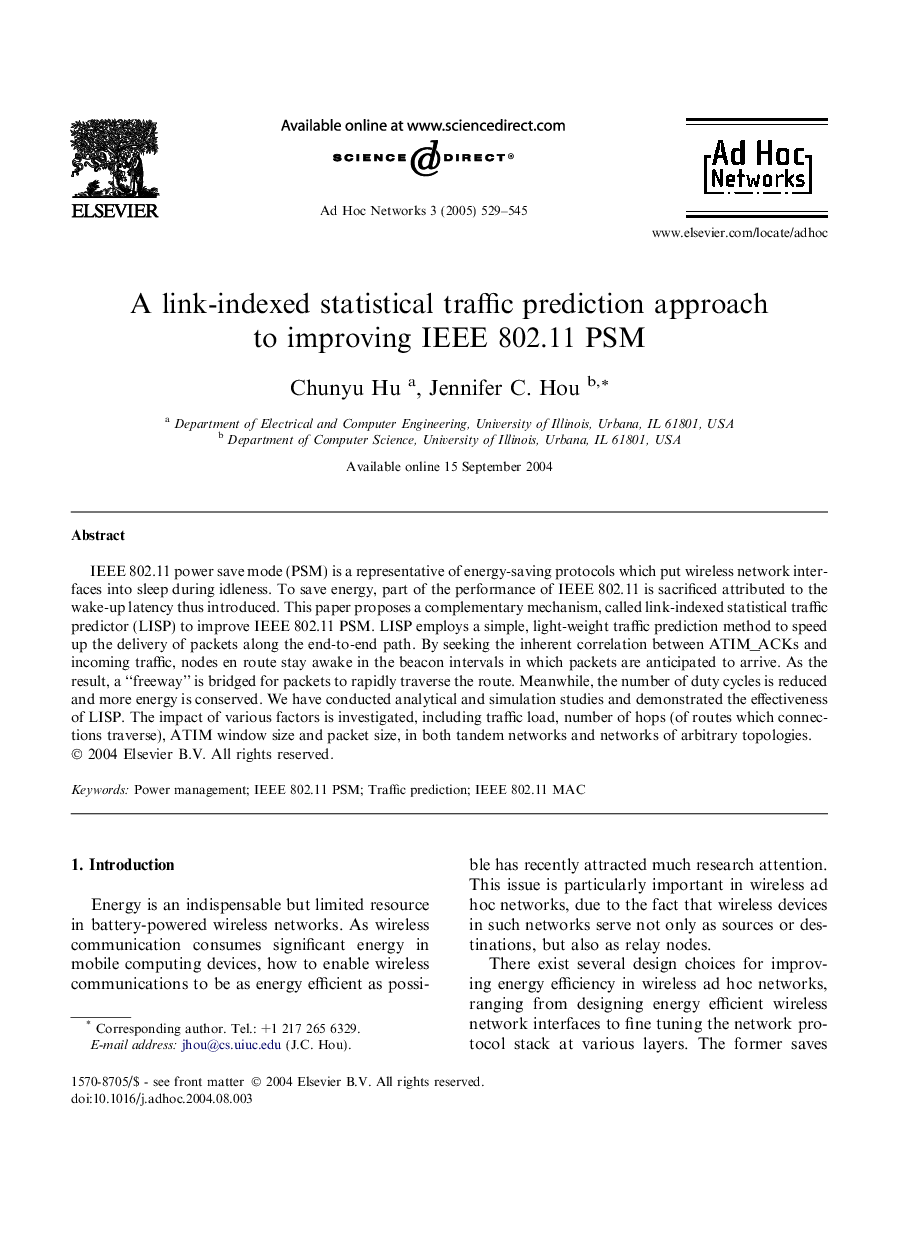| Article ID | Journal | Published Year | Pages | File Type |
|---|---|---|---|---|
| 10338068 | Ad Hoc Networks | 2005 | 17 Pages |
Abstract
IEEE 802.11 power save mode (PSM) is a representative of energy-saving protocols which put wireless network interfaces into sleep during idleness. To save energy, part of the performance of IEEE 802.11 is sacrificed attributed to the wake-up latency thus introduced. This paper proposes a complementary mechanism, called link-indexed statistical traffic predictor (LISP) to improve IEEE 802.11 PSM. LISP employs a simple, light-weight traffic prediction method to speed up the delivery of packets along the end-to-end path. By seeking the inherent correlation between ATIM_ACKs and incoming traffic, nodes en route stay awake in the beacon intervals in which packets are anticipated to arrive. As the result, a “freeway” is bridged for packets to rapidly traverse the route. Meanwhile, the number of duty cycles is reduced and more energy is conserved. We have conducted analytical and simulation studies and demonstrated the effectiveness of LISP. The impact of various factors is investigated, including traffic load, number of hops (of routes which connections traverse), ATIM window size and packet size, in both tandem networks and networks of arbitrary topologies.
Related Topics
Physical Sciences and Engineering
Computer Science
Computer Networks and Communications
Authors
Chunyu Hu, Jennifer C. Hou,
